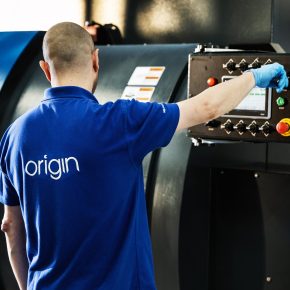
Stella: Fixed Rooflights vs Opening Rooflights
Choosing the right rooflight design for your project is important both from an aesthetical and practical viewpoint. Of course you’ll want your rooflight to look good and perform well, but one of the other major considerations which you’ll want to factor in, is whether your rooflight has the ability to open or not. Paul Trace, from Stella Rooflight, writes the following article…
What are the pros and cons of each?
As an obvious starting point, the only real downsides to a fixed design is lack of ventilation and/or the ability to access the roof. If there is a requirement for either of these things then an opening rooflight design is a must.
However, if you can live without the need for an opening design then fixed rooflights do offer a number of benefits. Perhaps the greatest of which being that they are significantly cheaper and can cost up to 30% less than an opening rooflight.
Fixed rooflights are also more thermally efficient and tend to offer a slimmer profile and greater viewable area than an opening alternative. Another important factor is that they weigh less, which means that they can be less expensive to transport and install. Large and heavy rooflights often need specialist crane equipment in the installation process, which will add further expense.
Where an opening rooflight is the preferred option there are also a number of considerations to bear in mind.
Manual or electric opening rooflight?
When it comes to opening rooflights, size is everything and the bigger the opening section, the heavier it is, meaning the more power is required to lift it.
Smaller opening rooflights tend to operate manually, but if you opt for a large rooflight most will be operated with electric actuation. A size limit for a manually operated rooflight will typically be up to around 1000mm (w) x 1500mm (h) or 1350mm (w) x 1100mm (h). Anything beyond these dimensions and the winder will start to have problems with the casement weight and the ability to tightly close the corners.
Bear in mind that the quality robustness of the manual winder can vary significantly between rooflight manufacturers. Some manufacturers are prone to using cheaper, and significantly lower quality imports, so it’s well worth checking what your rooflight manufacturer recommends as a maximum size for a manually operated rooflight.
For larger sizes it is better to consider some kind of electric actuator option. These may be supported by wind, rain and temperature sensor options, depending on what your manufacturer offers.

As the casement size and weight of your rooflight increases, so does the number of drives required to lift it, so there is a trade off in that bigger single casements offer more light but they are more expensive to operate.
Chain actuators
The chain actuators are typically located at the cill of the rooflight and are visible from the inside, although some manufacturers can offer a concealed actuator design, where the drives are fitted within the liner. This does result in a slight reduction in clear viewable area but leaves the cill area clear of any interruption.
Drives can have various chain lengths and would normally be expected to achieve an opening distance of around 350mm. These can sometimes be operated by wall switch or remote options. Some manufacturers even off the option of operating the rooflight via your smart phone.
It is also worth noting that manufacturers usually include a wind sensor with any opening casement which is larger than 2000mm x 1000mm. This sensor automatically closes the casement or prevents it from opening when the wind speed reaches a certain limit. Please check this with your rooflight manufacturer as if you are designing large area of opening roof glazing it is important that you consider the impact wind has on open rooflights along with the potential damage that can occur if wind sensors are not used.
Can I have a combination of fixed and opening rooflights?
In short, yes – you absolutely can have a mix of both.
With most modern rooflight designs you tend to see a run of much smaller rooflights linked side by side with multiple casements opening to achieve the required ventilation. Bespoke rooflight manufacturers have the ability to make much larger opening casements, which provides both increased light and ventilation when compared to linking.
In this way customers are offered the best of both worlds and they can choose a combination of fixed and opening rooflights, with a variety of manual mechanisms, gas struts or electric actuators to suit their needs.
Conclusion
If cost is a significant factor in your project then there are a couple of important questions to consider:
Does your rooflight needs to open for access or ventilation?
A fixed rooflight is a lot more cost effective than an opening version. If you have alternative sources of ventilation in the room then it might not be necessary to have your rooflight opening.
If it does need to open, is it small enough to operate manually?
A rooflight which can open with a manual screwjack winder will be considerably cheaper than an electrically actuated version. Anything up to 1000mm wide x 1200mm high can operate with a manual winder so if your rooflight is only slightly bigger than those dimensions, you could save a lot of money by reducing the size slightly.
For more information download ‘The Ultimate Guide to Conservation Rooflights’ – an independent guide to everything you need to know about specifying conservation rooflights – available exclusively on the Stella Rooflight website.
To find out more about Stella conservation rooflights, visit https://stellarooflight.co.uk/conservation-rooflights/
Visit Supplier's page
Latest news

21st November 2024
Altro distils style and performance at English Spirit
English Spirit Distillery has used an extensive package of Altro products front and back of house, in their new visitor centre café, shop and viewing area for the working distillery.
Posted in Articles, Bathrooms, Bedrooms & Washrooms, Building Industry News, Building Products & Structures, Building Systems, Case Studies, Floors, Interior Design & Construction, Interiors, Kitchens, Restoration & Refurbishment, Retrofit & Renovation, Timber Buildings and Timber Products, Walls
21st November 2024
Abloy UK creates bespoke locking solution for Secure Information Boxes
Abloy UK has supplied The Safety Letterbox Company Ltd with a bespoke Sentry CL811 Camlock for use in its Secure Information Boxes, assisting life safety and complying with new regulations and legislation for high rise buildings.
Posted in Access Control & Door Entry Systems, Architectural Ironmongery, Articles, Building Industry News, Building Products & Structures, Building Regulations & Accreditations, Building Services, Case Studies, Facility Management & Building Services, Health & Safety, Posts, Restoration & Refurbishment, Retrofit & Renovation, Security and Fire Protection
20th November 2024
CUPA: CUPACLAD enhances hotel aesthetics with a creative natural slate façade
Situated at the northern edge of a newly developed retail park near Bristol, the Abbey Wood Travelodge was conceived as part of the company’s new Budget-Luxe line of hotels – it features CUPACLAD, from CUPA PIZARRAS.
Posted in Articles, Building Industry News, Building Products & Structures, Building Systems, Case Studies, Cladding, Concrete, Cement, Admixtures, Facades, Posts, Restoration & Refurbishment, Retrofit & Renovation, Walls
20th November 2024
Origin launches in-house powder coating facility
Origin’s latest investment is set to redefine industry standards as it launches its own in-house powder coating facility.
Posted in Aluminium Products, Articles, Building Industry News, Building Products & Structures, Building Systems, Doors, Glass, Glazing, Innovations & New Products, Paints, Coatings & Finishes, Restoration & Refurbishment, Retrofit & Renovation, Site Preparation, Windows
 Sign up:
Sign up: